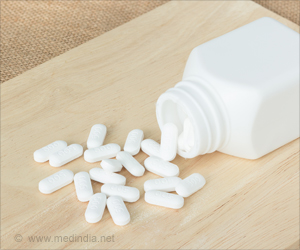Aspirin corrects the high-glucose-induced changes in cellular calcium ion homeostasis and NO production, via a mechanism involving the reduction of the superoxide anions levels possible by acting on PKC-induced NADPH activity.
Antioxidants such as vitamin E, probucol, GSH, and vitamin C are known to prevent high-glucose enhanced endothelial calcium ion/ cGMP response by scavenging the overshoot superoxide anions. Aspirin is a nonsteroidal anti-inflammatory drug (NSAID) widely used in the treatment of non-severe human inflammatory disorders.
Endothelial dysfunction in diabetes mellitus has been clearly demonstrated. Although the mechanism of high glucose concentrations-induced endothelial dysfunction is not yet known, it has been found that the production of different mediators by endothelial cells (including nitric oxide [NO]) is impaired in high glucose conditions. Several studies have shown that in various blood vessels of experimental diabetic rats and hamsters, the endothelium-dependent relaxation is impaired.Aspirin is known to possess antioxidant properties, and so, researchers from Institute of Cellular Biology and Pathology, Bucharest, Romania investigated the effect of aspirin on the high-glucose-induced changes in intracellular calcium ion concentration and NO release. To elucidate the mechanism of action of aspirin, the effect of the drug on high concentration glucose-induced increased levels of ROS was investigated. For these purposes, human endothelial cells were cultured in normal concentration glucose or high concentration glucose and after confluence, exposed for 48 h to high concentration glucose in the absence or presence of 1 mM aspirin. Then, the intracellular calcium ion concentration was measured fluorimetrically using fura-2, NO production was determined by Griess reaction, superoxide anions was evaluated by ferricytochrome c reduction, the intracellular reactive oxygen species (ROS) were evaluated by fluorimetry, and the levels of protein kinase C (PKC) by Western blot.
This study confirms and extends previous reports showing that exposure of endothelial cells to high concentration glucose impairs intracellular calcium ion mobilization and NO production and/or biodisponibility by a mechanism involving the accumulation of superoxide anions.
Data from this study, published in volume 18 (5) of Journal of Diabetes and its Complications indicate that aspirin corrects the high-glucose-induced changes in cellular calcium ion homeostasis and NO production, via a mechanism involving the reduction of the superoxide anions levels possible by acting on PKC-induced NADPH activity. In addition, these results provide evidence that aspirin improves the calcium response to agonist and NO production and/or biodisponibility in high concentration glucose condition. The authors assume that the antioxidant properties of aspirin are accountable for these effects, since data show that aspirin may scavenge superoxide anions by reducing NADPH activity in high concentration glucose conditions.
It is likely that through the combination of its effects (anti-inflammatory, antiplatelet aggregation, antioxidant agent) aspirin may represent a valuable drug for protection of endothelial cells from the deleterious effects of hyperglycemia associated with diabetes.











